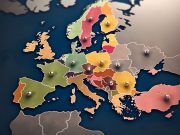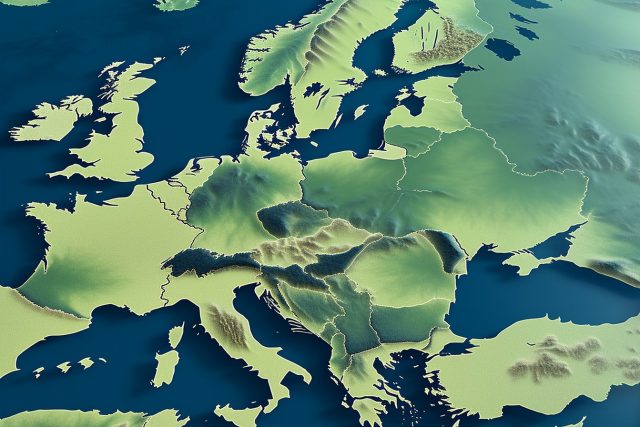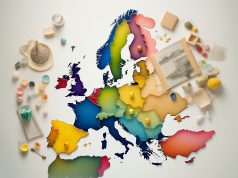Europe is a continent full of natural beauty and cultural diversity. But with so much to explore, it can be hard to decide which countries are the cleanest and most environmentally friendly places to visit. With that in mind, this article will take an in-depth look at which European country offers the best balance between sustainability and tourism. We’ll examine what sets each nation apart from its neighbors when it comes to keeping their environment safe and healthy for everyone. So if you’re looking for a great place to go green while exploring Europe’s amazing sights and sounds, read on!
Norway
Norway is like a sparkling diamond in the rough of Europe. With its strong commitment to pollution control, energy efficiency, and sustainability, this Nordic nation stands apart from other countries when it comes to cleanliness.
The Norwegian government has set ambitious goals for reducing carbon dioxide emissions by 40 percent by 2030 compared with 1990 levels. To achieve these goals, Norway has implemented an array of strategies that ensure efficient use of energy sources as well as reduce waste production. For example, all new buildings must meet stringent requirements regarding insulation and airtightness; combined heat and power plants have been established across the country; and there are incentives for businesses to invest in renewable energy sources such as wind turbines or solar panels.
Norway’s efforts to create a safe environment for citizens have paid off substantially over time: thanks to strict environmental regulations, air quality is significantly better than in many other European countries. In addition, Norwegians enjoy access to nature reserves where they can escape from urban life while also preserving natural habitats – something not always possible elsewhere on the continent. All in all, Norway remains one of the most pristine places in Europe today. Moving forward, it will be interesting to see how this Scandinavian powerhouse continues innovating ways towards creating an even cleaner future for itself and beyond.
Switzerland
Switzerland is one of the most pristine countries in Europe, with remarkable pollution levels and waste management systems. Its fresh mountain air has made it a popular tourist destination for those looking to escape from everyday life. The country’s commitment to environmental protection and sustainability are unparalleled, which makes it an ideal place to visit and explore safely.
An impressive factor that contributes to Switzerland’s cleanliness is its strict regulations on public transportation emissions and vehicle fuel standards. This allows travelers to experience the beauty of the Swiss Alps without sacrificing their health or harming nature. Additionally, the nation’s well-managed system of recycling reduces landfill waste while preserving resources and promoting sustainable development.
In addition to its natural environment, Switzerland also boasts some of the highest quality of living in all of Europe – thanks largely in part to its efficient infrastructure and modern cities. With excellent healthcare services, high educational standards and reliable infrastructure networks, this small but mighty European country can proudly boast about its thorough plans for keeping up with 21st century demands while maintaining its impeccable reputation as being one of the cleanest countries around. As an added bonus, visitors will be able to enjoy breathtaking Alpine vistas at every turn! Moving forward into Sweden then – another beautiful Nordic gem – let us discover what other hidden gems await…
Sweden
The majestic snow-capped mountains of Sweden beckon, a country known for its commitment to green energy initiatives and eco tourism opportunities. Home to the world’s first national parks in 1909, this Scandinavian nation is renowned for its cleanliness – both physically and environmentally. With spectacular vistas at every turn and crystal clear waters running through lush valleys, Sweden embodies a spirit of freedom that captures your imagination. From the bustling cities with their vibrant culture to the awe-inspiring natural beauty found throughout outdoor areas like Lapland in the northern reaches of the country, there are countless ways to reconnect with nature here. Whether it’s sailing on pristine lakes or discovering endless trails full of wildlife, Sweden has something special for everyone seeking an adventure under open skies.
Denmark
Denmark is a small European country, but it has big things to offer in the way of green initiatives and eco friendly solutions. With an emphasis on sustainability and renewable energy sources, Denmark is one of Europe’s cleanest countries. Here are just a few reasons why:
- The largest wind farm in Northern Europe is located off the coast of Denmark. This contributes to more than 40% of their electricity coming from wind power alone – making them world leaders in wind-generated electricity production!
- Public transportation infrastructure like buses and trains help reduce emissions that would be created by private vehicle use. In fact, over 38% of Danes get around through public transport or cycling instead of driving cars – greatly reducing air pollution for cities throughout the nation.
- Danish government policies have made it easier for citizens to invest in energy efficient homes and appliances; these incentives act as economic motivators towards adopting green practices at home.
From leading the wind energy industry to encouraging environmentally conscious living, Denmark is committed to being one of Europe’s most sustainable nations – both now and into the future! As we look ahead to Finland’s efforts to promote cleanliness and environmentalism, let us remember what inspiration can come from a small yet powerful nation such as Denmark.
Finland
Following Denmark’s example of clean energy and air pollution control, Finland is making major strides to become one of the greenest countries in Europe. With a recent shift towards renewable energy sources, such as wind and solar power, Finland has been able to reduce its dependency on foreign fuel sources. In addition, their commitment to reducing carbon emissions through the implementation of strict environmental regulations is helping them reach their goal of becoming more eco-friendly.
Finland has also taken steps to improve air quality across the country by introducing new policies that limit vehicle exhaust fumes and other pollutants from entering into public spaces. This has led to improved air quality throughout cities like Helsinki, which now boasts some of the cleanest air in all of Europe. Furthermore, they have implemented extensive measures for waste management and recycling plans for households that help keep landfills under control and out of sight.
The Finnish people are leading the way with innovative green energy solutions that will be sure to provide long term benefits not only for them but also for future generations. As climate change continues to threaten our planet’s well-being, it’s encouraging to see countries like Finland taking actionable steps towards preserving our environment while setting an example for others around the world.
Frequently Asked Questions
What Are The Environmental Regulations In Each Of These Countries?
When it comes to environmental regulations, Europe has some of the strictest standards in the world. Energy efficiency and waste management are two major areas that countries across the continent focus on heavily. In Denmark for example, all new building must meet energy-efficiency requirements before they can be approved for construction. Meanwhile, Germany has a comprehensive system of recycling and composting that helps reduce the amount of material going into landfills. Sweden is also ahead of many other nations when it comes to environmentally friendly policies—most recently introducing taxes on carbon emissions from transportation sources like cars and aircrafts. These three countries are just a few examples among many that demonstrate how serious European governments take their commitment to sustainability.
How Can Citizens Help To Maintain A Clean Environment?
Citizens all over the world can help to maintain a clean environment by improving infrastructure and reducing waste. From taking public transport instead of private vehicles, to using reusable bags when shopping, or opting for digital bill payments; every effort made counts towards making our planet cleaner and healthier. The important thing is that we make small changes in our daily routines that matter – like turning off unnecessary lights, fixing leaking taps, recycling as much as possible, and composting food scraps. These little steps can have an immense impact when done collectively.
How Does The Cleanliness Of Each Country Compare To Other Countries Around The World?
When it comes to green initiatives, waste management and overall cleanliness, each country has its own unique approach. From the United States to China and everywhere in between, countries have their own strategies for keeping their environment as healthy as possible. The success of these efforts can be seen in a variety of ways, from air quality index readings to water purity tests and more. Countries around the world are striving for cleaner living conditions that everyone can enjoy, but how does one country compare to another? It’s up to individuals to do their part by taking initiative and making sure they’re not contributing any more than necessary to global pollution levels.
What Other Factors Contribute To The Cleanliness Of These Countries?
When it comes to cleanliness, many countries around the world are doing their part in energy efficiency and waste management. Factors such as infrastructure investment, access to green technology, public transportation usage, renewable energy sources, and recycling initiatives all contribute significantly to a country’s level of cleanliness. In Europe specifically, investments in renewable energy have seen great success with some countries leading the way when it comes to reducing emissions and preserving resources for future generations. On top of that, many European nations have started implementing strict regulations on littering and plastic waste disposal which have helped them become even cleaner than they were before.
What Are The Most Effective Ways To Reduce Pollution In Each Country?
European countries are making an effort to reduce pollution levels by implementing renewable energy sources and green initiatives. From retrofitting buildings with solar power systems to incentivizing citizens for using sustainable transport, the continent is taking steps towards a cleaner environment. Governments have also begun subsidising electric vehicles and promoting public awareness campaigns about air quality. Furthermore, some cities are encouraging citizens to switch from traditional fuels like coal to greener alternatives like biomass or biogas. All of these efforts aim to drastically reduce atmospheric emissions and create healthier living conditions in Europe’s cities.
Conclusion
In conclusion, it is clear that many countries in Europe are making great strides towards a cleaner environment. With the help of citizens who are doing their part to reduce pollution and governments enacting environmental regulations, these nations have seen an impressive improvement in air quality and other measures of cleanliness. While there may not be one definitive “cleanest” country in Europe, each nation has its own unique methods for reducing pollutants and protecting their natural resources. As more people take responsibility for minimizing waste and preserving our planet, we can all benefit from living in healthier environments with less harm done to our ecosystems.




























